Fruit in Spain a Seasonal Guide
Fruit in Spain - A Seasonal Guide - We all know that fresh fruit is good for us, and Spain offers much more than just oranges and lemons, with some quite exotic looking varieties, but when are they in season and what do you do with some of the more unusual types... Find out below.
Fruit in Spain by season
Spring season for fruit is classed as between March and April
Summer is May, June, July, August and September
Autumn is October and November
Winter is December, January and February
What is available month by month. This a guide as harvest times do vary by region. In the hotter areas, seasons start earlier and continue longer. In colder areas harvest times start later and end sooner.
January and February - Almonds, Apples, Avocados, Bananas, Chestnuts, Grapes, Olives, kiwi, Passion fruit, Pomegranate and Tangerines.
January is also a good month to take advantage of the harvest of the last persimmons and custard apples of the season. Also, in January, the first strawberries begin to appear in the supermarkets.
March and April - Grapefruit, Kiwi, Lime, Medlar Fruit (Nisperos) Oranges, Pineapple, Strawberries
May - Apricots, Cherries, Fig, Gooseberry, Lemon, Mango, Medlar Fruit, Melon, Oranges, Nectarine, Peach, Pear, Plums, Prickly Pears, Raspberry, Tomato, Watermelon, wild Strawberry
June, July, August and September - as above with the addition of Zucchini/courgette
October and November - Cherimoya, Dates, Jujube, Mandarin, Persimmon, Pomegranate, Quince
December - Almonds, Apples, Avocado, Bananas, Cranberry, Chestnut, Grapes, Olives, Passion Fruit, Pomegranate, Tangerines
Fruit in Spain a guide to some of the more unusual types
Chirimoya or Cherimoya also known as Custard Apple
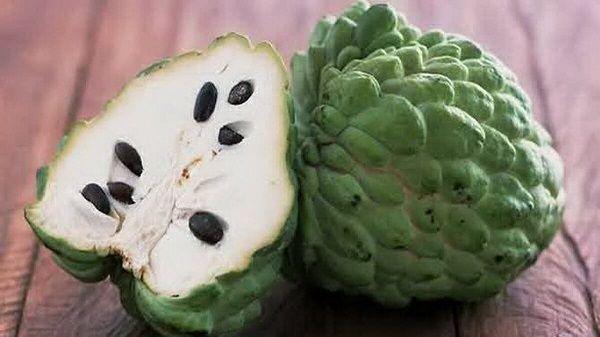
These are a large green tropical fruit. Inside it has white flesh and lots of shiny black seeds. It´s delicate and bruises easily and is in season in Autumn & Winter. The best way to eat these is to slice them in half and eat with a spoon, serve them chilled and avoid the large black seeds. When ripe, cherimoyas give to gentle pressure, similar to a pear or an avocado but don´t over squeeze when testing for ripeness. Try not to buy them when overripe as they do not taste as good, these are also great for smoothies..
These are good for you as Chirimoya have 75% water content and contain vitamin A & C. They also have potassium and antioxidants too, they are recommended for constipation, to reduce stress and are said to be good for skin, teeth and bones too, some even say that the properties of the Chirimoya act in a similar way to aspirin for pain relief. Let us know if they work for you in this way.
Fig – Higo

The fruit consists of green skin that sometimes ripens purple or brown and the inside is a brownish-red. The main season is August through October.
Figs can be eaten either peeled or unpeeled, depending on the skin and personal preference. Figs can be eaten fresh or dried and used in jam-making. Also, they wonderful served on a salad or with cheese. Eating excessive amounts of figs can have a laxative effect and so they are best eaten in moderation!
Figs are rich in minerals including potassium, calcium, magnesium, iron and copper and are a good source of antioxidant vitamins A, E and K plus they contain natural sugars and soluble fibre, it is said that they can help lower high blood pressure.
Pomegranates also known as Granada

These are a large orange or red fruit with a thick skin they are full of bright red seeds ((known as arils) and are in season normally from October to February.
To eat, slice off the top and bottom and break into half, scoop out the seeds and eat these, be careful with the red juice as this can stain. Eat the seeds on their own or make a juice with them - 5 or 6 large pomegranates should produce about 4 glasses of juice; you can also add them to salads and yoghurts etc.
These are good for you and are said to help to avoid plaque building up on teeth and may even help to reduce blood pressure. Pomegranates are packed with antioxidants and high in fibre too, they also contain lots of Vitamin C, Vitamin K, Iron, Calcium, Potassium, so eat away.
Did you know the name of the city of Granada means pomegranate and signs of this can be found all around the city. In Greek mythology, the pomegranate was known as the 'fruit of the dead' as it was said to have arisen from the blood of Adonis.
It has been said that every pomegranate contains the same number of seeds 613 but there seems to be no real evidence to this, count them if you have time.
Fruit in Spain
Persimmon also known as Caqui fruit, Sharoni or Sharon Fruit

Persimmon fruit look similar to a tomato but can vary in colour from a yellowey orange to deep red colour they are rich and tangy and sweet all at the same time, so the taste is quite unique. These are generally available during the Autumn season.
You can eat these like an apple as the skin is also edible. When ripe they can also be eaten sliced or scoop out the seeds and inner stem if present and eat with a spoon. (Note - Do not eat on an empty stomach due to possible reaction with gastric juices.) The pulp is almost liquid, like jam and has a very sweet taste. They can be ripened by storing in a container with alcohol, such as aniseed liquor.
The deep red fruit seem to have more flavour but be careful not to stain clothes with the juice as it can be difficult to remove.
The acidic nature of this fruit when unripe is quite unpleasant so it best to try these fruits when ripe, eaten unripe then can make your mouth feel slightly numb this is due to the amount of tannins present.
These are high in fibre and rich in vitamin C. they may also help to improve metabolism
Pitahaya also known as pitaya, Dragon Fruit and Strawberry pear.
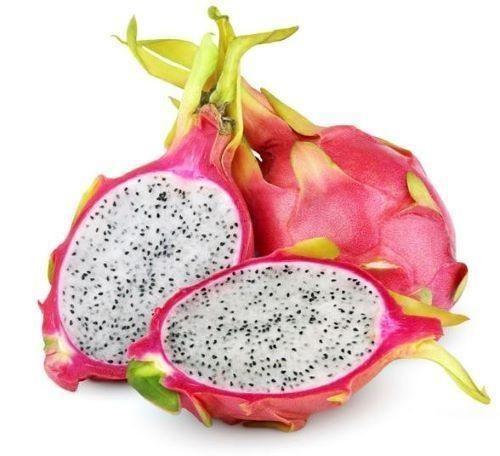
These are not really native to Spain but have recently been grown in the Costa del Sol with some success.
Dragon fruit are part of the cactus family. The plants flower at night and have a wonderful fragrance. The two most common types have bright red skin with green scales that resemble a dragon — hence the name, but they can range in colour from red, yellow to purple. the flesh inside is commonly white with black seeds, but other less common varieties can be red, pink or yellow all with black seeds, each fruit generally weighs 1kg. They are more sour and refreshing, with juicier flesh and a strong taste which is normally described as between a melon and a pear with the consistency of a kiwi, Unripe fruit have very little taste at all.
Here’s how to eat dragon fruit - Select a ripe fruit with bright red, evenly coloured skin that gives slightly when squeezed. Use a sharp knife and cut straight through the fruit, slicing it in half. You can use a spoon to eat the fruit out of the skin or peel the skin off and slice the pulp into small pieces.
Ideas for serving dragon fruit - Simply slice it up and eat it as is. Chop it into small pieces and top with Greek yogurt and chopped nuts. Include it in a salad.
Watermelon or sandía
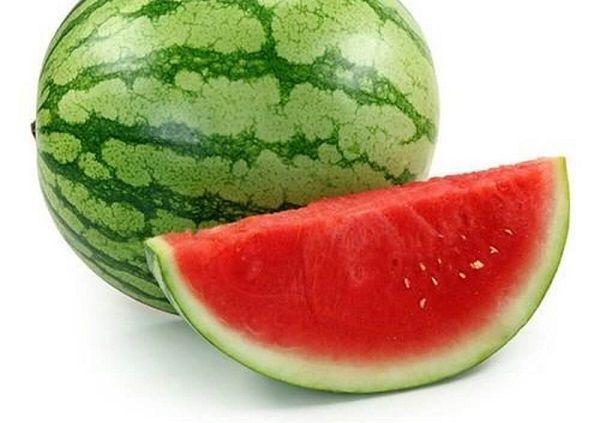
Typically, these are available from late Spring to mid-Autumn, but many are grown under glass, so they tend to be available all year round. Spain is one of the largest producers of this fruit worldwide.
The watermelon is one of the world’s largest fruits and is actually a berry with a thick, smooth rind and a fleshy interior, they grow on a flowering vine. While most people think of watermelons as having green rinds and rosy centres, they can actually vary from white, yellow, light green, spotted and streaked in colour on the outside, to shades of pinks, reds and orange-yellows on the inside. They also vary drastically in size and weight, and can be oblong, oval or spherical in shape.
Some say that the best way to choose a good watermelon is to tap on its rind with a couple of fingers and listen for a hollow sound, there are even some seedless varieties around which are now becoming popular, look for Reina de Corazones, Apirena, Pepsin and Jack.
Watermelons are composed of about 92% water; hence their name and they have diuretic qualities, they are also rich in vitamins A, B and C. Varieties with pink or red flesh contain a high level of the antioxidant, lycopene, which is thought to help prevent prostate and other cancers. Another benefit of watermelon is its citrulline content which is an amino acid used by our bodies to make arginine, another amino acid that helps eliminate ammonia from cells, improve circulation and reinforce the immune system.
Try this lovely Watermelon Gazpacho Recipe. This is the perfect healthy soup for summer and a refreshing change to a traditional Gazpacho
Loquat better known here as Nisperos, also known as Medlar fruit.
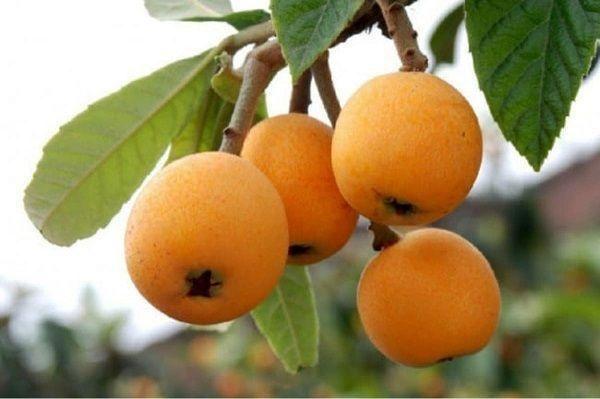
These are small peach-coloured fruits they are a little fussy to prepare but have a delicate taste. These can be enjoyed during the Spring season
While the skin can be eaten the best bit is inside, the flesh. The fruit contains large seeds that are toxic and must not be eaten as they contain cyanogenic glycosides, mainly amygdalin, which release cyanide. Lots of people make chutney, jelly and jam using the Nispero.
They are low in calories, and packed full of antioxidants, vitamins and rich in soluble fibre, they also contain vitamins' A, C and E, and traces of the groups B, B1, B6, B2 and B, with potassium, phosphorus, calcium, magnesium, sodium, iron, zinc, iodine and Selenium!! Despite all this they taste lovely! it is said that they may promote heart health, have anticancer properties, improve metabolic health and offer anti-inflammatory properties.
You will see these being grown in the valley of Callosa d'En Sarrià, just 15 minutes inland from Benidorm, they are our locally produced "superfood".
Nispero jam and chutney recipes
Mango
Spanish Mango! The majority of Spanish mango producers are based in Málaga (the region of the Axarquía), as well as in Granada. This is a delicious and sweet Spanish fruit, and the main season is August through November.
How to peel a mango easily - slice a mango in half, get a tall glass, get the part between the fruit and skin and once you push it down the skin will instantly slide off.

Fruit in Spain
Quince also known as Membrillo
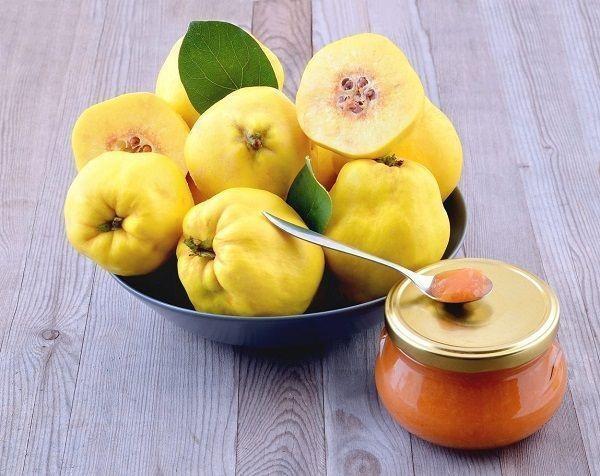
These look similar to an Apple but slightly larger. They are in season in Autumn.
These are very tart so are best used cooked and are perfect for making jams and jellies as they are high in pectin. They can be used with apples in crumbles and baking to enhance the flavour. Quince can be roasted in the oven or boiled with cinnamon for a lovely winter dessert. Boil them down with sugar and serve with delicious Manchego cheese. Also, quarter and added to stews and casseroles - fantastic with pork - think apple sauce with a difference.
They also have a very pleasant perfume that can fragrance the house.
They are high in fibre and antioxidants and are supposed to help with weight loss.
Recipe for Manchego Cheese and Quince Paste
Prickly Pears, called Higo Chumbo in Spanish also knows as the Barbary Fig
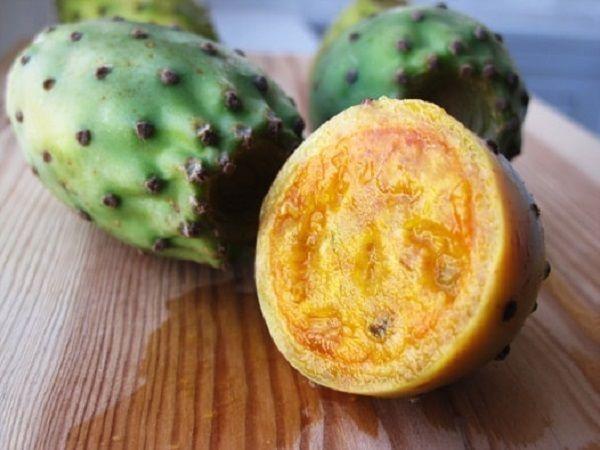
These are the fruit of the paddle cactus; the fruit can range in colour from green (less sweet) to red (very sweet) and orange shades in between. The little spots seen on them are not thorns, they are covered in glochids which are hair-like splinters that can stick into your skin and are very painful and hard to see. When picking a prickly pear cactus fruit protect your hands. Prickly pears taste a bit like a strawberry and raspberry combined with slight earthy notes some compare them to extra tasty watermelon and preferably they are eaten chilled They are in season during the summertime.
The best way to prepare a prickly pear is to remove the glochids so you can handle the fruit, If buying from a supermarket this is often done for you, if doing this at home the glochids can be burned off over an open flame. Grip the fruit with a pair of tongs or stick it on the end of a fork. Slowly turn the fruit over the open flame. As the glochids burn off you may hear popping sounds or see little sparks fly off the fruit.
Once you have removed all the glochids slice about one-quarter inch off of the ends of the fruit. Then take your knife and slice the skin of the fruit lengthwise across the top, about one-quarter inch down into the fruit. Using your fingers pull the skin back off of the fruit. The skin is thin on the outside, but has a thick layer underneath that comes off too. Peel all of the skin off so that you are left with just the interior pear-shaped piece of fruit. Now you can slice up the fruit to eat or use in smoothies. The prickly pear has small, hard seeds that you cannot bite through, but they are safe to swallow or just spit them out.
Prickly pears contain magnesium and potassium and lots of fibre and antioxidants. Prickly pears may help to lower cholesterol and contain very few calories so are great for weight watchers.
Jujube or Chinese date or Azoifaifa in Spanish
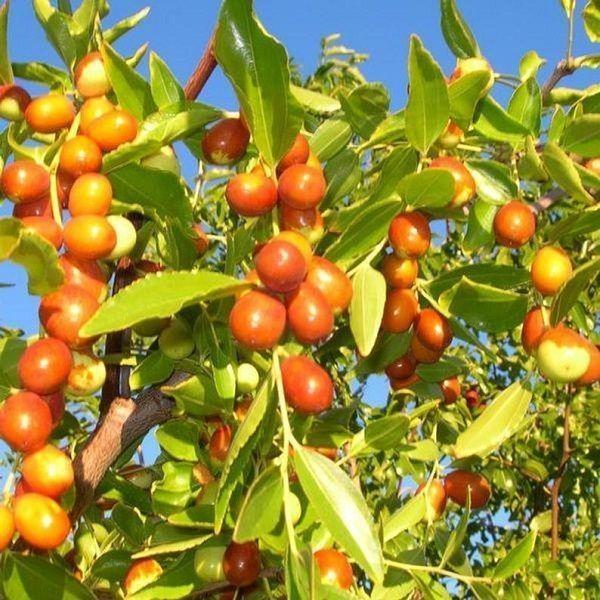
This reddish Brown Berry looks like a bit like an acorn when they are ripe, they’re dark red or purple and may appear slightly wrinkled they taste similar to an apple. You can eat them anytime from yellow-green to full red and are in season during the Autumn.
They are often used to make tea and jams but also try adding sliced jujubes to your fall salads. Toss arugula with walnuts, gorgonzola cheese, and a sweet vinaigrette or slice thinly and add to your morning oatmeal or on top of yogurt for added sweetness or bake sliced with pork chops.
Jujube fruits can be eaten raw as a snack. Dried jujubes are high in sugar and should be limited in your diet, they are low in calories but rich in fibre and other nutrients, they have been used in ancient Chinese medicine for over 4,000 years to help calm the mind, reduce stress and anxiety, and relax the body.
Other helpful pages



